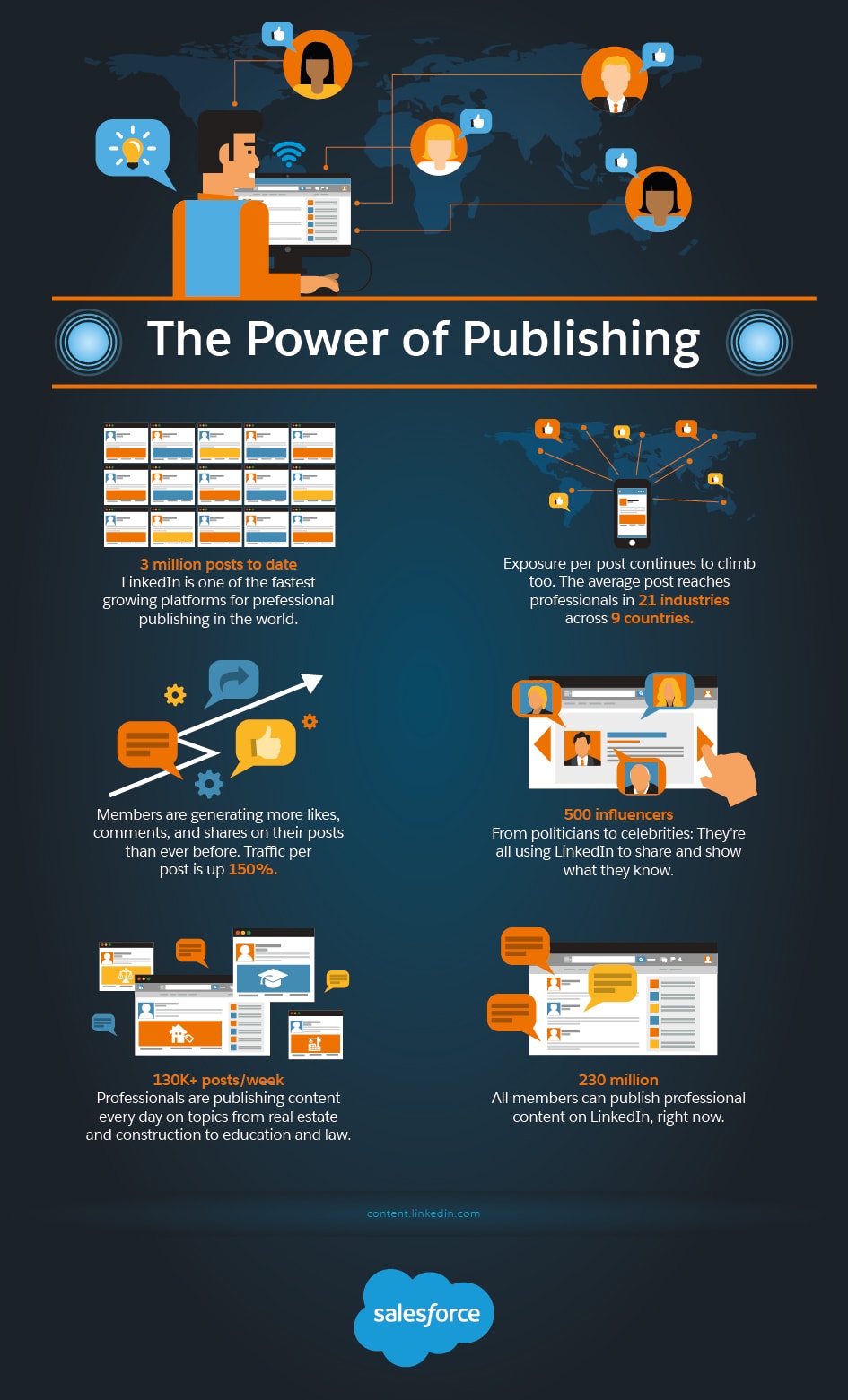LinkedIn’s Pulse features curated content based on a user’s professional profile. It takes great content and a little effort to be featured on this feed, but it can offer big benefits if done correctly. Learn how to get started, and why this channel matters, below.
What is LinkedIn Pulse?
Pulse is a news feed for LinkedIn that publishes content written and generated by its users. Stanford students originally developed Pulse as a class project, but not long after it took off and became a prominent, professional news feed.
The key to the concept is being choosy about the kind of content that’s published: Pulse must make sure the quality of its content is higher than that of content on other news feeds. This is a big reason why it can be a challenge to get your content featured. But it’s not impossible.
Why Work Toward Getting Content Featured on Pulse?
Because LinkedIn Pulse expects high caliber content, its featured pieces get a lot of user attention and can have a direct impact on your business and professional credibility. Getting published on this channel means that you can reach top industry professionals, which can impact your career or business in a positive way. LinkedIn claims that there are more than 360 million professionals in search of content. Pulse has over 130,000 unique original articles published each week.

13 Tips for Getting Your Content Published on Pulse
Here are tips from the experts on how to get your content featured on LinkedIn Pulse.
- Publish quality content that people want to read.
- Make sure anything you publish is error free (spelling, grammar, factual) and professional in tone.
- Provide valuable and useful content to your readers. For example, Richard Branson regularly writes about entrepreneurship, and Gretchen Rubin helps her readers learn how to feel more in control of their lives. Find more influencers and publications to follow in the Pulse Discover section.
- Use relevant industry and professional hashtags that relate to the content. Hashtagify can help you discern which hashtags to use, and this article by Leslie Walker for Lifewire explains how to find hashtags for Twitter posts.
- Write something people will want to share. What is the buzzword or hot topic in your industry? Write about that! Find these topics in industry newsletters, Twitter chats, and LinkedIn posts. Follow industry influencers on Twitter and learn what they’re most passionate about right now: People share articles on topics that affect them.
- Make your content unique and with the right tone. Write from your perspective.
- Word count does “count” (so to speak). Make sure your article is over 900 words or, even better, ranges from 1,200 to 2,000 words. Longer articles tend to have more keywords, which will make them more visible as well.
- Share your content to your personal or business social networks immediately after publishing.
- Always think of and think like your target market as you create content. Ask yourself: Who is my audience, and how will this information benefit them? Make sure the content you want to get on LinkedIn Pulse relates to work or business. Regardless of what industry you are in, this is what the LinkedIn Pulse newsfeed is all about.
- Make your title interesting and eye-grabbing. After all, this is the first thing people are going to see and take note of before they read or click. Use a headline analyzer tool, like the one from CoSchedule, to make sure your title is click-worthy.
- Post content that people will want to interact with. Your goal should be to trigger conversations.
- Make sure to tweet @LinkedInPulse with your shared content.
The consensus seems to be that it is most important to develop quality content (no surprise there) and then tweet at @LinkedInPulse if you want to be featured. Most of these tips are common for any piece of content, but it’s important to check off the list if you’re thinking about publishing on Pulse.
The Takeaway
LinkedIn Pulse is an excellent professional platform to feature your content. If you are striving to get your content in front of LinkedIn’s massive, relevant audience, these tips will help. Focus on creating high-quality, engaging content that’s useful to a professional, work-oriented audience in your industry. If you put in the effort and produce content worth sharing, you increase your chances of being picked up by Pulse
Share "Use LinkedIn Pulse to Jumpstart Your Content’s Popularity" On Your Site




